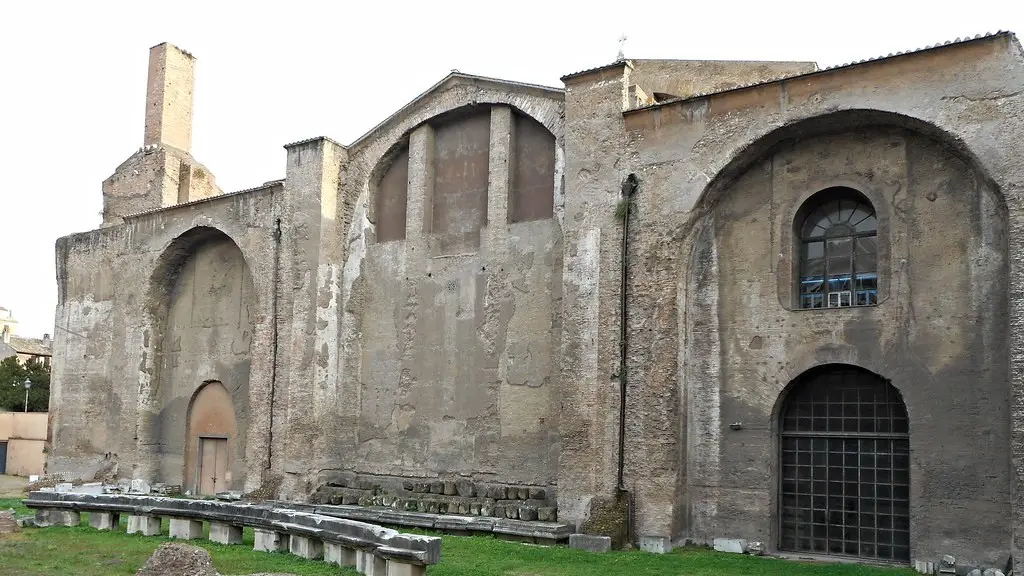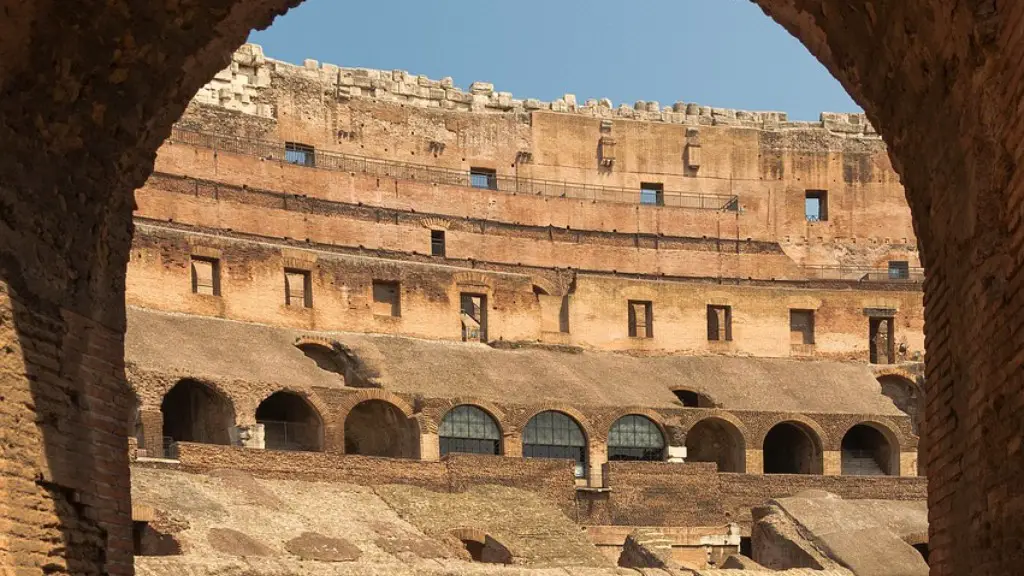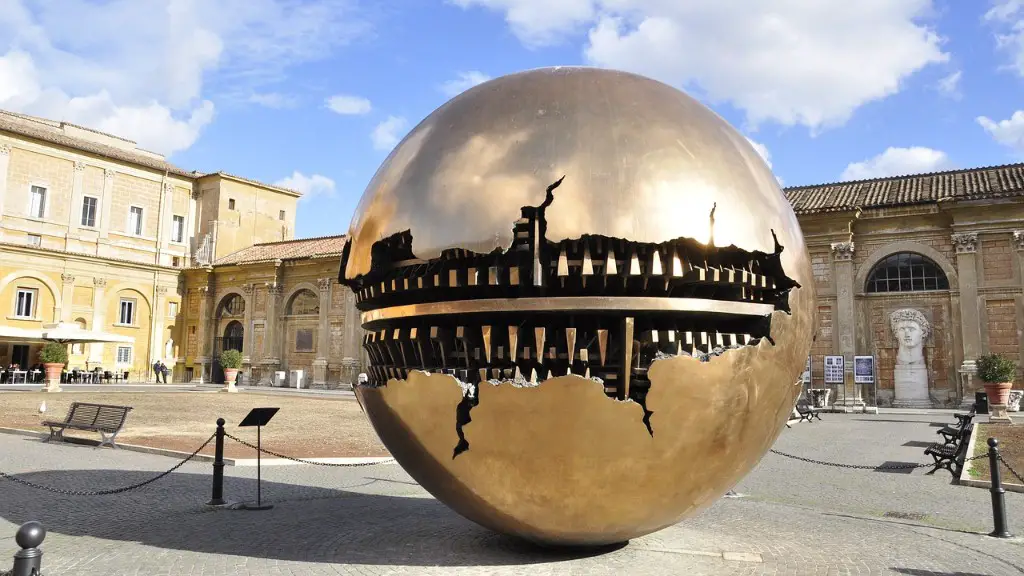The ancient Romans had to rely on a few sources for freshwater. The most important source was springs, which were used for public baths and fountains. Aqueducts were used to bring water from distant springs and rivers into the city, and private wells were used for personal use. The Romans also had a complex system of sewers and drainage to carry away waste water and keep streets clean.
The ancient Romans had access to a number of freshwater sources, including rivers, lakes, and springs. In addition, they constructed aqueducts to bring water from distant sources into the city of Rome.
What major water source did Rome have access to?
Rome’s location provided two key advantages: its seven hills made city defense more manageable and the Tiber river supplied a steady source of water. The first water-related project in Rome was likely the Cloaca Maxima, or the Great Sewer. The Cloaca Maxima was a drainage canal that began construction in 600 BCE.
The aqueduct was one of the most impressive feats of engineering of the Roman Empire. To achieve a consistent, shallow slope to move the water in a continuous flow, the Romans lay underground pipes and constructed siphons throughout the landscape. The aqueduct not only supplied cities with fresh water for drinking, but also supplied water for public baths and fountains, and for irrigation.
Which river provided fresh water to ancient Romans
The Tiber River was a key factor in the development of Rome and its surrounding areas. The river provided a source of freshwater and rich soil, which was essential for the growth of people, animals, and crops. Rome is located east of the river, and the river itself begins in the Apennine mountains and flows to the Tyrrhenian Sea.
Rome was an ideal location for a number of reasons. It was located on the Tiber River, which provided easy access to the Mediterranean Sea. The Romans were also somewhat protected from seaborne invasion, as Rome lay in the middle of the Italian peninsula. This made it difficult for enemies to mount an attack, as they would have to travel through hostile territory to reach Rome.
What is the oldest water source in Rome?
The Trevi Fountain is one of the oldest water sources in Rome. The fountain dates back to ancient Roman times, since the construction of the Aqua Virgo Aqueduct in 19 BC that provided water to the Roman baths and the fountains of central Rome. The Trevi Fountain is a beautiful example of ancient Roman architecture and engineering and is one of the most popular tourist attractions in Rome.
Aqueduct technology was a game-changer for the Roman Empire. By engineering a system of aqueducts, the Romans were able to tap into distant water sources and bring water to their cities and towns. This allowed them to increase their population and expand their territory. Aqueducts also provided the Romans with a reliable and clean source of water, which was essential for their public baths and toilets.
Does water ever flow uphill?
The starting point of all rivers is higher than their end point However, under the right conditions, small amounts of water can be drawn upwards, against the tug of gravity, through a phenomenon known as “capillary action” For this to occur, however, the water must be confined into a small flow space.
The aqueducts were a remarkable feat of engineering and allowed the ancient Romans to bring water from the mountains down to the city. The water was then distributed through pipes to both homes and public fountains. The aqueducts allowed for a steady supply of clean water which was vital for the health of the city.
What river was Rome located on giving them access to the sea
The Tiber is one of the major rivers in Italy. It is 252 miles (405 km) long and flows in a generally southerly direction through a series of scenic gorges and broad valleys. The Tiber flows through the city of Rome and enters the Tyrrhenian Sea of the Mediterranean near Ostia Antica.
The water supply in ancient Greece was progressive in most cities. Every house had its own water supply with cisterns or pumping wells in some cases. Sophisticated piping for water supply systems was connected to individual houses.
How did the Romans bring fresh water to their cities quizlet?
The Roman aqueducts were a feat of engineering that did not only provide the cities with fresh water but also served as a way to move water over long distances. It was possible to transport water from a main source, often a spring or a river, to the city over a system of channels and bridges.
The ancient Romans were impressive shipbuilders and sailors. Their technology and size were unrivaled until the 16th century. Roman seamen were able to navigate the Mediterranean, Red Sea, and Indian Ocean. They also sailed along the coasts of France, England, and Africa.
Did the Romans ever explore the Atlantic
The Romans didn’t add much to our ancient understanding of the Atlantic Ocean, but they did explore the region between the British Isles and Scandinavia, which they called the North Sea. This is an important area of the world to study because it has a lot of History.
Ships were an important part of Roman culture and trade. The Roman Empire was able to expand its territory and trade routes due to its advanced shipbuilding technology. Ships were designed to withstand the harsh conditions of the north western hemisphere, including the strong tidal currents and storms. The flat bottomed design of Roman ships also allowed them to navigate in shallow waters and on ebb tides.
How did Romans get water before aqueducts?
Cisterns are a great way to collect and store rainwater. They can be dug into the ground to collect rainwater that runs off the roof or on the ground. This is a great way to conserve water and ensure that you have a reliable source of water during dry times.
The lead levels in ancient Rome’s tap water were up to 100 times higher than in local spring water, according to researchers. The water was contaminated by lead from the aqueducts that supplied it.
Did ancient Romans have running water
The ancient Roman plumbing system was a legendary achievement in civil engineering, bringing fresh water to urbanites from hundreds of kilometers away. Wealthy Romans had hot and cold running water, as well as a sewage system that whisked waste away. This system was so impressive that it was used as a model for many cities that followed.
While it is true that the Romans were one of the first civilizations to have indoor plumbing, it is important to remember that these systems were not nearly as effective as they are today. In fact, many modern historians believe that the Roman plumbing was largely responsible for the spread of disease throughout the empire.
Conclusion
The ancient Romans had access to freshwater from a variety of sources, including rivers, lakes, and aqueducts.
The ancient romans had access to freshwater through a few different sources. One was through natural springs that were found throughout the Roman Empire. There were also a number of aqueducts that were built in order to bring water from different areas into the cities. Finally, the Romans also had a system of reservoirs and cisterns that were used to store water for later use. While there were a few different ways to get freshwater, it was not always easy to access and it was often expensive.





